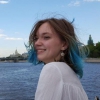How did you learn about the school and what was the registration process like?
I found the announcement online when I was looking for events that fit the profile of my international Master’s program.
The school was open to students and researchers working with laser, X-ray, or synchrotron technologies and their applications. You would benefit from background knowledge of the subject, but it was not a requisite: I met other students who had no prior knowledge of synchrotron radiation, yes they still successfully completed the school.
In order to take part in the school, I had to fill out the application on its website and pass the selection. There was also the opportunity to apply for a partial scholarship, which meant a 50-percent refund of the registration fee, though I wasn’t among the 24 lucky winners of this competition. In total, the school welcomed 100 participants.
How were the classes organized?
The lectures were delivered on a superb level, and the school’s audience was very engaged: everyone had lots of follow-up questions, so nearly every lecture turned into a discussion in the end. Some lectures were also set up as dialogues with the audience, which helped to keep everyone focused and engaged, too.
Unfortunately, the school didn’t include any practical classes because the venue provided us only with conference rooms fit for lectures and seminars.

The courtyard of the Isidor I. Rabi Institute, where the participants were staying. Photo courtesy of the subject
What did you like the most about the school?
To be honest, it would be hard for me to highlight just one thing – I have found great value in every lecture I attended. Moreover, the lectures complemented each other, presenting a comprehensive picture of the topic. However, there were three talks that I found particularly relevant with regard to my Master’s program:
- Attosecond X-ray Free-Electron Lasers by Prof. Dr. Agostino Marinelli (SLAC National Accelerator Laboratory and Stanford University, USA);
- Attosecond Molecular Physics (Attochemistry) by Prof. Dr. Fernando Martin (Universidad Autonoma de Madrid, Spain);
- Attosecond Spectroscopy in Solids by Prof. Dr. Matteo Lucchini (Politecnico di Milano, Italy).
How did you benefit from participation?
In the short span of the school, I received an overview of the theory behind X-ray and attosecond experiments, namely:
- The methods of generation and application of attosecond pulses and how they are used to study the structure of atoms, molecules, complex nanostructures, and composite materials;
- The fundamentals and methods of using lasers on free electrons for materials science.
Apart from that, the school answered some burning questions I had and pointed me towards possible new research areas.
I am planning to use this knowledge both in my Master’s thesis and other scientifiс projects. For instance, earlier, we developed a hyaluronic acid complex with biologically active substances – and its precise structure is yet to be analyzed. So this is one of many ways that I will apply my new skills.
Overall, you can benefit from such events in a number of ways – and the following list is not in order of importance:
- It’s an opportunity to get into a specific subject field in a short amount of time;
- Each lecture cited multiple articles, patents, and books that you get to peruse in more detail after the event;
- It’s a great networking opportunity: the connections you establish with your fellow students and professors can later result in research collaborations;
- Surrounded by students and teachers from all over the world, you get to practice your English and engage in multicultural communication;
- Finally, it’s your chance to visit new places.

The view from the centre's observation deck. Photo courtesy of the subject
Would you like to take part in a similar event in the future?
Yes, absolutely, and I recommend my fellow students and researchers to join such schools in their fields, too. For instance, on the event schedule of the Ettore Majorana Foundation and Centre for Scientific Culture you can find schools in various fields, including physics, biophysics, medicine, ethology, science communication and more – you will definitely find something to your liking.
Petr Snetkov is a Master’s student in the program Megascience Laser and Synchrotron Technologies, implemented by the Institute of Advanced Data Transfer Systems. You can follow the institute on VK and Telegram.
Interview by Evgenia Budarina,
an engineer at the Institute of Advanced Data Transfer Systems




